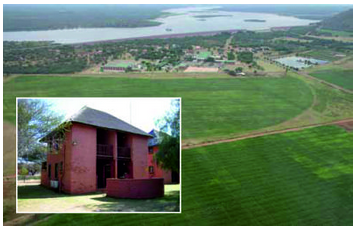Since 1994 government has transferred about three million hectares of land back to black people in an effort to address the negative impact of the Native Land Act of 1913.
 The Act reserved 87 per cent of the land for white South Africans while evicting blacks from their ancestral land.
The Act reserved 87 per cent of the land for white South Africans while evicting blacks from their ancestral land.
Among the successful beneficiaries of land restitution are communities that were evicted from their ancestral land in the Maile, Mmamerotse, Tantanana, Bethanie, Phalane and Jericho villages, outside Brits in North West. The evictions here took place in 1922, 1923 and 1963.
In 1995, when government invited people to launch claims, the six villages joined hands to launch one claim because the land they were evicted from was now called Tweerivier 197 JQ.
In 1999 they succeeded with their claim and government bought back 6 100 hectares of land on their behalf. Efforts by community members to return to their ancestral land were delayed by infighting. Other members from different villages launched a counter claim and that distracted the process.
According to community member Charles Moagi, government told them that until they sorted out their differences, no land would be handed over to them. “The counter claim by others and the infighting dealt the two groups a blow as both of them could not receive the land they had claimed,” he said.
In 2004 the two groups decided to come together, formed a Communal Property Association (CPA) and launched a joint claim. That’s when things started to move in the right direction. They agreed on the name Dikgatlhong for the CPA and came up with a memorandum of agreement binding them to work together.
“Dikgatlhong was chosen because the name itself means the coming together and it united the two groups. We realised that the infighting wasted a lot of energy and time, hence we came together,” said Moagi, chairperson of the Dikgatlhong CPA, which represents 203 families.
The CPA manages the land, which is divided into various sections, on behalf of the families. Dikgatlhong Game Farming and Lodge occupies 2 000 hectares, irrigation crops occupies 3 340 hectares, and the cattle farming project occupies 565 hectare - all of which was bought by the Department of Rural Development and Land Reform for the community. The farm produces maize, soya beans, sunflowers and vegetables.
“Though the land belonged to our ancestors, government wanted us to explain in detail what we wanted to do with the land and that’s when we came up with what we called the master plan. That plan explained in detail what we wanted to do.
“It spoke about our plans to lease some of the land, to plough some of the land and to involve our young people in the running of the lodge,” explained Moagi.
He added that to prevent the possibility of the farm collapsing, they established a good working relationship with the previous occupants of the farm. “We retained the skilled people who were working on the farm to ensure that there was continuity and skills transfer.”
The lodge created 25 direct jobs and employed locals from different villages. It created part time jobs and there’s also talk of starting a bursary scheme for young people who want to pursue a career in farming, game and wildlife conservation.
Moagi said the secret of Dikgatlhong’s success was that they did not antagonise the previous owners and occupants of the farm. He warned other CPAs not to fall into the trap of alienating the previous owners of land, as this would prevent skills transfer to the new occupants.



 Facebook
Facebook Twitter
Twitter WhatsApp
WhatsApp